Below, Football Outsiders takes a look at the biggest need positions for all 32 teams going into the NFL draft. Each team is listed with its biggest need, a lesser-known need, and a position where there's no need at all.
Many of the descriptions reference Football Outsiders stats which are explained here. The most common is DVOA, or defense-adjusted value over average, which compares every play of the NFL season to a league average and adjusts based on situation and opponent.
AFC East
By Rivers McCown
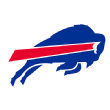
Buffalo Bills
Biggest need: Quarterback
AJ McCarron is a downgrade from Tyrod Taylor, and Nathan Peterman isn't assured a roster spot at this point. The Bills spent all offseason building up a ton of draft capital, and then the Jets beat them into the top five. Either via a trade-up or via a selection that bucks draft consensus, look for the Bills to leave the first two rounds with someone they consider their signal-caller of the future. About all we can glean from their current plan is that they want their quarterbacks to be tall.
Quiet need: Linebacker
The Bills addressed nose tackle in free agency by bringing in former Panther Star Lotulelei, which is step one toward fixing a defense that finished 31st in run defense DVOA. Next up are the linebackers. Lorenzo Alexander turns 35 in May, and the only other player on the depth chart at linebacker who is a known quantity at this point is journeyman Ramon Humber. It's very possible that, with no talent injection, the players who start alongside Alexander are a late-round pick and an undrafted free agent; not exactly the most reliable combo. It's hard to forecast what the Bills will do since so much of their offseason is about what they do at quarterback, but Sean McDermott's defenses in Carolina invested heavily in coverage, off-ball linebackers.
Not a need: Running back
Between LeSean McCoy, Chris Ivory, Travaris Cadet and Patrick DiMarco, the Bills have a steady collection of backs with a versatile combination of skill sets. In an ideal situation, these backs will all be utilized ... as spectators on every McCoy carry.
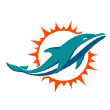
Miami Dolphins
Biggest need: Tight end
Waiver claim A.J. Derby is a serviceable NFL tight end, ideally a No. 2. But MarQueis Gray and Thomas Duarte are not No. 1s, and given how important it is for a modern spread offense to have a tight end that can command attention, it's surprising how little priority the Dolphins have put on the position. Taking a chance on a rookie like Dallas Goedert or Mike Gesicki might give a little extra explosion to an offense that could use someone to create matchup problems.
Quiet need: Linebacker
2017 second-rounder Raekwon McMillan is coming off an ACL tear. Reclamation project Stephone Anthony was a healthy scratch for much of 2017. The lasting memory of Kiko Alonso was him getting beat in coverage over and over again. On raw talent, this unit could be average to even a little above average next year. On current NFL performance, they're lacking. It would not be surprising if the Dolphins dialed up Tremaine Edmunds or Roquan Smith (if he's around) at 11th overall.
Not a need: Cornerback
Recent investments in Cordrea Tankersley and Xavien Howard have panned out pretty well, and 2015 fifth-rounder Tony Lippett is coming back off a 2017 season lost to injury. The Dolphins don't seem to have many obvious strengths -- they're a team of solid players without much in the way of star power -- but we would be most surprised if they invested in more corners.
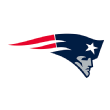
New England Patriots
Biggest need: Offensive tackle
After shoring up its defense early in the offseason, New England faces the prospect of heading into training camp with LaAdrian Waddle, Matt Tobin and Antonio Garcia in a competition to guard Tom Brady's blind side. Garcia lost all of his rookie season to blood clots, and though he had talent in spades at Troy, he's an unknown factor for health reasons. This doesn't figure to be a great draft for tackles, but now that the Patriots have some extra first-round ammo they could be heading for Notre Dame's Mike McGlinchey or UCLA's Kolton Miller.
Quiet need: Edge rusher
Or they could do the exact opposite. The Patriots had an astounding number of coverage sacks last year, and have yet to adequately replace Chandler Jones with a true No. 1 pass-rusher. Derek Rivers, another highly touted rookie who missed his entire first season, and free-agent addition Adrian Clayborn are both worthy stabs at fixing the problem. Somehow being in position to draft Boston College's Harold Landry would solve it in permanent ink. And if they instead have to aim for a second-round player, Florida State's Josh Sweat has shown big on his athleticism scores, and could overcome poor production in college to be a good edge in the pros.
Not a need: Defensive back
Adding Jason McCourty off a great year in Cleveland to a core that already had his brother Devin McCourty, Stephon Gilmore, Patrick Chung and Duron Harmon gives the Pats more than enough bodies to mix and match coverages however they'd like. As bad as New England's defense was early last season, the pass defense largely solidified after that -- except against the Eagles in the Super Bowl, anyway.
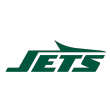
New York Jets
Biggest need: Quarterback
No use in pretending that the Jets traded up to draft something other than a quarterback, right? Offensively, the Jets are in an interesting spot, because last season's pass offense was unexpectedly productive under offensive coordinator John Morton. But they fired Morton, and are hoping Jeremy Bates can recreate the same results. Bates had an uninspiring one-season run as Seahawks offensive coordinator, pre-Russell Wilson, in 2011. A lot can change in seven years, so it's hard to know which of this year's crop of quarterbacks is the best fit for what the Jets want to do. Jets fans would be well-served getting familiar with all of the potential early quarterbacks in this draft -- and then hoping Josh Allen isn't the one they end up with.
Quiet need: Offensive line
The Jets are relying on a ton of scrapheap talent along the offensive line, with left tackle through center all being filled by free agents. Guard Brian Winters is the only player making more than marginal money, and even he's more solid than good. If injuries strike, the Jets could be in big trouble, because trading up for a quarterback has made the depth chart a secondary concern. If they could luck into someone like Arkansas' Frank Ragnow with their third-round pick, they should consider themselves fortunate.
Not a need: Wide receiver
The Jets could still use a true No. 1, superstar receiver. But that aside -- they currently have no less than 17 receivers on their roster. The Day 2 and early Day 3 picks of the recent past are stacked on top of the free-agency moves, such as Terrelle Pryor Sr. and Andre Roberts, which are stacked on top of UDFA such as Jalin Marshall and Tre McBride. There's no need for them to be taking a stab at any non-sure things in the draft.
AFC North
By Charles McDonald

Baltimore Ravens
Biggest need: Wide receiver
Since their inception over 20 years ago, the Ravens have always struggled to find wide receiver talent. Breshad Perriman looks like another missed receiver draft pick for Ozzie Newsome, and the team has turned to 30-year-old Michael Crabtree to carry the load as the No. 1 receiver. This year's draft class doesn't seem to have bona fide No. 1 receiver options, but there are plenty of players who can boost Baltimore's receiver corps; perhaps Maryland product D.J. Moore?
Quiet need: Quarterback
Joe Flacco has been a colossal disappointment since he signed his original contract extension in 2013. He has had a 4,000-yard season only once in his career (2016), and simply hasn't created enough production to make his gargantuan contract hit reasonable for the Ravens. His receiving options have been poor, but even filtering out that context, Flacco's play hasn't been good enough to justify his contract. In a draft with a handful of legitimate quarterback prospects, the Ravens need to consider drafting a replacement (or at least an eventual heir).
Not a need: Defensive tackle
Baltimore has a diverse group of defensive tackles who can do a bit of everything. Between Brandon Williams, Michael Pierce, Carl Davis, Willie Henry and others, the Ravens have an extremely solid, young core of interior linemen.

Cincinnati Bengals
Biggest need: Offensive line
Unsurprisingly, the Bengals really struggled on the offensive line after letting Kevin Zeitler and Andrew Whitworth walk in free agency. They made a splash with their trade for Cordy Glenn, but they still have huge needs at center, right guard and right tackle. As currently constructed, Cincinnati's offensive line could be a huge hindrance toward their 2018 goals.
Quiet need: Defensive tackle
Geno Atkins is one of the elite defensive tackles in the league, and it's about time the Bengals found him an effective running mate. They signed Chris Baker earlier in the offseason, but after his struggles in Tampa Bay, he can't be counted on to be productive for them. Adding another explosive player next to Atkins is a sneaky priority.
Not a need: Cornerback
William Jackson III, Dre Kirkpatrick and Darqueze Dennard are a solid cornerback trio. Jackson looks poised to be the best Bengals cornerback since Leon Hall and Johnathan Joseph suited up for the team. Cornerback is low on the list of needs for Cincinnati this year.

Cleveland Browns
Biggest need: Quarterback
This is a no-brainer. The Browns have traded every single quarterback on their roster from last year and signed Tyrod Taylor to be a bridge. They have the No. 1 and No. 4 picks in a draft class rich with quarterback talent at the top. Draft your guy, get this thing moving.
Quiet need: Defensive tackle
The Browns have a young, talented defensive tackle group, but it doesn't hurt to add another young body in the draft. They traded away Danny Shelton, who played 43.7 percent of the defensive snaps for the Browns last year, so they'll need another talented player to take on some of the snaps that Shelton is leaving behind. With a plethora of picks in the top two rounds, they'll have an opportunity to further bolster what is already a strength.
Not a need: Wide receiver
Josh Gordon, Jarvis Landry, Corey Coleman. Not a need.

Pittsburgh Steelers
Biggest need: Inside linebackers
Unfortunately, Ryan Shazier has a long road back to playing football -- if he ever does play again. The Steelers are going to need some speed in the middle of their defense to take over Shazier's spot. This class has some solid linebacker talent at every point in the draft, so they should be able to walk out with a starting-caliber player.
Quiet need: Pass-rushers
This one is tricky. The Steelers led the league in sacks and sack rate in 2017, but a lot of their pressure had to be manufactured from players who were neither defensive linemen nor edge rushers. Defensive back Mike Hilton and inside linebacker Vince Williams combined for 12 sacks. Edge rusher Bud Dupree has been a bit underwhelming, so the Steelers might want to bring in competition for him.
Not a need: Wide receiver
The Steelers have arguably the best receiver in the league in Antonio Brown, the best rising sophomore receiver in JuJu Smith-Schuster, and an explosive playmaker in Martavis Bryant. Smith-Schuster and Bryant could probably be No. 1 receivers if given the opportunity. Not a need.
AFC South
By Tom Gower

Houston Texans
Biggest need: Offensive tackle
All three Texans quarterbacks, including Deshaun Watson, ranked among the nine most sacked quarterbacks in the league by adjusted sack rate. Improving a shaky offensive tackle situation looked like a priority in free agency, but the Texans lost out on Nate Solder and settled for Seantrel Henderson, who barely played the past two seasons. Maybe Derek Newton can come back from double patellar tendon tears.
Quiet need: Tight end
Houston needs at least a blocking tight end after a series of concussions led C.J. Fiedorowicz to retire. An upgrade at receiving tight end also seems in order, with Ryan Griffin going to injured reserve last year due to his own concussion, and the team being below average at the position by DVOA even in the games Watson started.
Not a need: Wide receiver
DeAndre Hopkins is still one of the best receivers in the NFL. With Watson in the lineup, Will Fuller V displayed the deep-threat ability that led the Texans to select him in the first round. While Watson was a starter, Hopkins and Fuller ranked first and third in the NFL in total receiving value by Football Outsiders DYAR (defense-adjusted yards above replacement). Bruce Ellington had a solid season as a slot receiver.
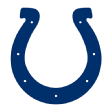
Indianapolis Colts
Biggest need: Cornerback
Indianapolis fielded the worst pass defense in the league by DVOA in 2017. The Colts' best cornerback was Rashaan Melvin, who departed for Oakland in free agency, and they have yet to add one to replace him. Their projected top starter is 2017 second-round pick Quincy Wilson, who struggled to get on the field under Chuck Pagano. It is hard to see how Indianapolis will not again field one of the league's worst pass defenses.
Quiet need: Wide receiver
T.Y. Hilton was the only Colts receiver who had more than 26 catches last year, and the player with those 26 catches is now in Jacksonville (Donte Moncrief). Indianapolis added Ryan Grant after the Ravens bailed on him, but that just offsets the loss of a body from an inadequate position group. GM Chris Ballard's lack of activity in the wide receiver department may be more confusing than his inactivity elsewhere.
Not a need: Quarterback
The best news for Colts fans this offseason might have been Ballard's trade down with the Jets; not just for the immensely valuable second-round picks, but as a definitive sign that Indianapolis was not interested in drafting a quarterback of their own. Andrew Luck was seventh in the league in QBR when mostly healthy in 2016, and Jacoby Brissett showed last season that he is a perfectly competent backup.
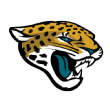
Jacksonville Jaguars
Biggest need: Offensive playmaker
The Jaguars had decisions to make at receiver this offseason, so Allen Robinson is now in Chicago and Allen Hurns in Dallas while only Marqise Lee remains in Duval from the trio of 2014 rookies. That creates opportunity for Donte Moncrief to demonstrate the form he only flashed in Indianapolis. There's also an opportunity for young players Keelan Cole and Dede Westbrook, both unimpressive by DVOA as rookies. But there's also space here for an impact rookie, either a playmaking wide receiver or a tight end with more of a future than short-term addition Austin Seferian-Jenkins.
Quiet need: Quarterback
Quarterback is never really a "quiet" need, so think of this as "low-impact." Picking late in the first round, the Jaguars are unlikely to find a 2018 upgrade on Blake Bortles, whose play largely determined how Jacksonville fared even with an upgraded defense. When Bortles posted an above-average passing DVOA in the first quarter, Jacksonville was 10-1. When he was below average, they were 0-5. You can only manage a quarterback so much, and Jacksonville should look for an upgrade sooner rather than later.
Not a need: Cornerback
The Jaguars had the best defense and the best pass defense in the NFL last year, as A.J. Bouye and Jalen Ramsey combined to allow opponents' top two receivers fewer yards than any other team in the league. D.J. Hayden replaces Aaron Colvin in the slot.
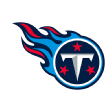
Tennessee Titans
Biggest need: Outside linebacker
Derrick Morgan and Brian Orakpo are both older and set to be free agents in 2019, while second-round pick Kevin Dodd has lived down to his miserable SackSEER rating (our college-to-pro edge rusher projection system) in two injury-plagued seasons. Tennessee posted a virtually identical pass defense DVOA in 2016 as in 2017 despite last offseason's three high-profile secondary additions, so adding to the pass rush will be the priority at the 2018 draft.
Quiet need: Wide receiver
It is hard to see the Titans spending much draft capital at receiver after spending the fifth pick and trading up in the third round to select receivers last year, but they do have a need at the position. They're likely to play more three-receiver sets, because Mike Mularkey played so few of them, and have yet to add someone to replace Eric Decker.
Not a need: Quarterback
Marcus Mariota is locked in as the starter. At backup, if Blaine Gabbert were a great player, Arizona would have kept him rather than paying Sam Bradford $20 million. But he is still definitely an upgrade on Matt Cassel, who had the worst passing DVOA of any quarterback with at least 50 plays since Max Hall's miserable stint with the 2010 Cardinals.
AFC West
By Derrik Klassen
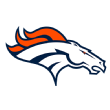
Denver Broncos
Biggest need: Cornerback
The departure of Aqib Talib has altered the identity of Denver's secondary. In years past, Talib could lock down one side of the field or a specific target, allowing the rest of the secondary to play around him. The previous construct was especially ideal for Chris Harris Jr., who primarily played the nickel position. With Talib gone, Harris will likely step into more of an outside cornerback position. On top of Harris' role potentially changing, the quality of depth behind Harris and Bradley Roby is subpar. The Broncos need to reinvest in their secondary and get back to the construct that won them a Super Bowl a few seasons ago.
Quiet need: Quarterback
If money is any indication, Case Keenum is not Denver's long-term plan at quarterback. Keenum signed a two-year, $36 million deal this offseason, and will be the presumptive starter heading into the season, but Denver ought to think about grooming someone behind him. Though 2016 first-round pick Paxton Lynch is already on the roster, he has shown little promise, and should not deter the Broncos from looking for a new future at quarterback.
Not a need: Offensive line
Denver has invested in its offensive line during the past couple of offseasons. During the 2017 offseason, the Broncos spent a first-round pick on left tackle Garrett Bolles and signed Ronald Leary, a former Cowboy, to a four-year, $36 million contract. The additions continued this offseason with the acquisition of right tackle Jared Veldheer via a trade with the Arizona Cardinals. With the handful of recent investments to accentuate Matt Paradis at center, Denver's offensive line is in good hands moving forward, and does not have much room to be improved upon without overinvesting.
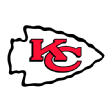
Kansas City Chiefs
Biggest need: Cornerback
Change is not always positive. Earlier this offseason, the Chiefs acquired Kendall Fuller via a trade with the Redskins and sent Marcus Peters to the Rams in a separate move. Additionally, the two cornerbacks who played opposite of Peters -- Terrance Mitchell and Phillip Gaines -- are no longer on the team. Free agent David Amerson was added to fill in opposite Fuller. Aside from nickel cornerback Steven Nelson, Kansas City's cornerback group looks entirely revamped, but without any clear upgrades. Fuller is not the caliber of player Peters is, while Amerson is likely a wash compared to Mitchell and Gaines. More change should be on the horizon for the Chiefs' secondary.
Quiet need: Front seven
Kansas City's front seven is as lopsided as a unit can be. Justin Houston is an All-Pro caliber edge player and Chris Jones is an explosive young defensive tackle, but the unit around those two is poor. The interior defensive line group, Jones excluded, is a collection of depth players who will be forced into starting roles. Likewise, the off-ball linebacker tandem of Anthony Hitchens and Reggie Ragland does not inspire confidence. Both are low-priority castoffs from their former teams, and have limited skill sets. Even Dee Ford, now the team's No.2 pass-rusher, maxes out as an average player for the role he will play.
Not a need: Skill position talent
Patrick Mahomes will have an abundance of talent at his disposal as he steps into the starting quarterback role. Providing support from the backfield, Kareem Hunt led the NFL in rushing yards as a rookie last season, and looked to have the makings of a star running back moving forward. Wide receivers Tyreek Hill and Sammy Watkins present a unique, two-headed speed threat. Both players are excellent deep options, as well as underneath pass-catchers who excel with the ball in their hands. If three star teammates were not already enough, Mahomes also will have tight end Travis Kelce roaming the middle of the field and terrorizing defenses. The Chiefs can take a break on acquiring skill position talent and look to build elsewhere.
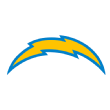
Los Angeles Chargers
Biggest need: Linebacker
Throwing Band-Aid solutions at the linebacker position cannot continue any longer. Since 2014, the Chargers have spent one top-100 pick on a linebacker, and have not signed any major free agents at the position. Denzel Perryman has been the team's only real investment at the position. Perryman, though talented and productive when able to play, has struggled to remain healthy to this point in his career. There must be a more concentrated effort to add a better linebacker next to Perryman, as well as better depth behind him.
Quiet need: Edge rusher depth
Joey Bosa and Melvin Ingram are as dominant a pass-rushing duo as any in football right now. In 2017, the pair combined for 23 sacks and regularly put pressure on opposing quarterbacks, making life easier on the secondary. When either of those two are not on the field, however, the Chargers lose a significant amount of pass-rushing threat. Adding another edge rusher who can come off the bench would be of great benefit to the Chargers, especially considering it would more comfortably allow Bosa to slide inside on obvious passing downs.
Not a need: Receivers
Barring a wave of injuries (something the Chargers have sadly become accustomed to), the team's pass-catching corps should prove versatile, dynamic and deep. Keenan Allen, when healthy, is one of the smoothest route runners in the NFL, and has the after-the-catch ability to capitalize. With a possession receiver in Mike Williams and two speedsters in Travis Benjamin and Tyrell Williams, the remainder of the receiver group should give head coach Anthony Lynn the tools to stress defenses however he wants. As the cherry on top, tight end Hunter Henry has blossomed into a good receiving threat, particularly in the red zone. Philip Rivers is well-equipped to make a playoff run with this group of pass-catchers.
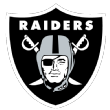
Oakland Raiders
Biggest need: Pass-rusher
Oakland finished with the fifth-worst pressure rate in the league last season, according to Sports Info Solutions charting. Edge rusher Khalil Mack is a perennial All-Pro, but he cannot be a one-man show. Regardless of whether Bruce Irvin becomes a full-time pass-rusher again, the Raiders need to add talent on the edge, and give Mack more assistance in getting to the opposing quarterback. Having just one pass-rusher to rely on is a poor recipe for any defense, much less a Raiders defense still trying to rebuild the linebacker corps and secondary.
Quiet need: Receivers
Swapping out Michael Crabtree for Jordy Nelson was a questionable move, at best. Nelson's yards-per-reception rate plummeted to 9.1 yards in 2017, down from a 14.8-yard career average prior to 2017. Unless he has an unexpected comeback season, he is a downgrade from Crabtree. Amari Cooper is also coming off a rough season littered with drop issues. Cooper's uncertainty and the downgrade to Nelson are accentuated by the lack of depth at wide receiver, along with the ever-middling Jared Cook as the starting tight end.
Not a need: Offensive line
The Falcons and Cowboys are the only teams with more money invested in their offensive lines than the Raiders. Guards Kelechi Osemele and Gabe Jackson are each making just over $10 million next season, while center Rodney Hudson and left tackle Donald Penn are set to make roughly $8.5 million apiece. All four players are, at least, adequate at their positions, and have no business being replaced right now. Right tackle is the lone position left up in the air, but with as much money as the team already has invested in the position group, it is tough to imagine a scenario where the Raiders burn a high draft pick on a right tackle.
NFC East
By Vincent Verhei
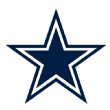
Dallas Cowboys
Biggest need: Secondary
It feels like we say this every year, and we probably do, but the Cowboys haven't fielded a particularly good defensive backfield for a decade now. All three Dallas cornerbacks -- Anthony Brown, Jourdan Lewis and Orlando Scandrick -- were beaten regularly last season, and Scandrick is now in Washington. The Cowboys were 21st in Football Outsiders' rankings against No. 1 wide receivers and 23rd against No. 2s. Safeties Byron Jones and Jeff Heath allowed too many big plays on both runs and passes. Jones might be moved back to corner, where he played as a rookie in 2015, but that would just open a hole at free safety.
Quiet need: Wide receiver
Dez Bryant failed to top 100 yards receiving in any of his last 23 games with the Cowboys, so his cut wasn't terribly surprising. Terrance Williams did manage 141 yards against Kansas City last year, but he averaged fewer than 30 yards in his other 15 games. Cole Beasley was the only player in the league in 2017 with at least 30 receptions but a catch rate below 60 percent and fewer than 9 yards per catch. Newcomer Allen Hurns went over a thousand yards in 2015 but has failed to hit 500 yards in two years since.
Not a need: Pass-rusher
In his fourth season, DeMarcus Lawrence was second in the league in sacks and first in the league in quarterback hurries. He could have a quality bookend this season if Taco Charlton develops. The first-round pick had only 3.0 sacks as a rookie, but that was in a situational role, playing less than 40 percent of Dallas' defensive snaps. He should take a step forward in 2018. On the inside, defensive tackle David Irving had 7.0 sacks in only eight games.

New York Giants
Biggest need: Pass-rusher
In trades and free agency, the Giants have added new starters at left tackle, left guard, running back and linebacker. However, they also traded away Jason Pierre-Paul to Tampa Bay. That move will save them nearly $40 million in salary-cap space in the next few years, but it leaves them with just one proven pass-rusher on the roster. Olivier Vernon comes into the season with 44.0 career sacks; the rest of the roster combines for 41.5. The second-leading sacker behind Vernon is defensive back William Gay, who has 7.0 sacks in 11 NFL seasons. Vernon, meanwhile, had only 6.5 sacks in 2017, fewest since his rookie year in 2012. He's also moving to linebacker in defensive coordinator James Bettcher's 3-4 base scheme. There are plenty of question marks here.
Quiet need: Quarterback
It seems that nobody in New York wants to acknowledge this, but Eli Manning is nearing the end of his career. He turned 37 in January, and though Tom Brady and Drew Brees have proved aging quarterbacks can still excel, Manning's best days are behind him. With the second pick in the draft, the Giants have a rare opportunity to find their next franchise passer and bring him along slowly, just as Manning began his career with the Giants as a backup to Kurt Warner. It would be the wise move in the long term.
Not a need: Wide receiver
New York's wide receivers were pretty much all injured at one point or another in 2017, but they should be healthy again in 2018. A starting trio of Odell Beckham Jr., Brandon Marshall and Sterling Shepard, plus tight end Evan Engram, should be among the league's better receiving groups. This would obviously change if Beckham is traded, but as it stands now, the Giants are solid here.

Philadelphia Eagles
Biggest need: Linebacker
Let's be honest, this is a hard one. Only four starters from the Super Bowl win over New England have left the team, and that includes safety Corey Graham, who started only one game in the regular season. With Carson Wentz and Jason Peters back from injury, the Eagles should be more talented on opening day than the team that hoisted the Lombardi trophy. So when we say that linebacker is their biggest need, that's a relative statement. But the Eagles sometimes struggled to cover opposing backs and tight ends, and they gave up more big runs than you'd expect. With no picks in the second or third round, the Eagles also are strong candidates to trade down out of the first round to get some extra chances.
Quiet need: Special teams
The Eagles don't presently have a player on their roster who has ever punted in an NFL game. Cam Johnston, a former Aussie rules player, was on their practice squad and by default would be punting if the Eagles had a game tomorrow. The Eagles also have a big hole at punt returner. Kenjon Barner, who handled that gig in 2017, is still available, but there's a reason Philadelphia hasn't bothered to re-sign him yet.
Not a need: Quarterback
Had he stayed healthy, Wentz almost certainly would have won the league's MVP award last year. He finished second in touchdown passes despite missing three games; in fact, Russell Wilson didn't pass him until the fourth quarter of Week 17. When Wentz went down, backup Nick Foles struggled in his first action but then shined in the playoffs, completing 73 percent of his passes for more than 9 yards per throw with six touchdowns and just one interception. There's not a team in the league with a better one-two combo at the position.

Washington Redskins
Biggest need: Defensive line
Washington's run defense finished dead last in adjusted line yards allowed last year. Its defensive linemen were consistently blown off the line of scrimmage. Only 19 defensive linemen in the league made at least 15 run tackles and allowed an average gain on those tackles of 3.0 yards or more, and Washington had two of them in Ziggy Hood and Matthew Ioannidis. Stacy McGee's average run tackle wasn't much better, coming 2.5 yards past the line of scrimmage. A healthy Jonathan Allen (the 17th overall pick in last year's draft who played only five games as a rookie due to a foot injury) is an important addition, but Washington still needs more help here.
Quiet need: Running back
This is a "quiet" need only in the sense that the need on the defensive line is so much louder. Only one Washington runner qualified for our running back leaderboards: rookie Samaje Perine, who finished dead last out of 47 backs. Rob Kelley, the theoretical lead back, was limited to seven games by ankle and knee injuries -- and when he did play, he averaged just 3.1 yards per carry and 28 yards per game. Chris Thompson was a very good receiver out of the backfield, but Washington needs a workhorse here.
Not a need: Offensive tackle
Washington's starting offensive line was intact for the first seven weeks of 2017, and at that point, the Redskins' offense was sixth in the league at 5.9 yards per play. Then the line was ravaged by injury, and from that point forward, it fell to 4.9 yards per play, ranked 21st. Right tackle Morgan Moses was the only player to start every game, as he has for each of the past three years now. Left tackle Trent Williams missed six games with knee injuries. He had surgery in December and might miss OTAs but is expected to be 100 percent by Week 1. There are questions on the inside -- center Spencer Long joined the Jets, and guard Shawn Lauvao remains unsigned -- but Washington should be all set on the edges.
NFC North
By Scott Kacsmar
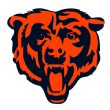
Chicago Bears
Biggest need: Offensive line
Running the ball has been part of Chicago's offensive DNA for decades, and that shouldn't change with Matt Nagy taking over as head coach with a talented running back duo. He'll also want Mitchell Trubisky to feel more comfortable in his sophomore season. The Bears have a few solid starters along the line, but left guard (Bradley Sowell) and right tackle (Bobby Massie) are unexciting NFC West transplants who have to step up after the departure of Josh Sitton. Notre Dame guard Quenton Nelson could be an option for the Bears with the No. 8 pick in the draft, if he isn't already off the board.
Quiet need: Secondary
Chicago signed cornerback Kyle Fuller to a four-year extension worth $56 million, but this secondary could still use some serious playmaking ability. The Bears have a league-low 24 interceptions since 2015, and no individual player has had more than two picks in a season for Chicago since 2014. A starting group of Fuller, Prince Amukamara, Adrian Amos and Eddie Jackson is underwhelming in a division with Aaron Rodgers, Matthew Stafford and Kirk Cousins at quarterback. Fuller is the only defensive back the Bears have drafted in the first three rounds of the past five drafts. That needs to change.
Not a need: Running back
Jordan Howard and Tarik Cohen give the Bears what they need at running back. Howard was a great find in the fifth round in 2016, as his 2,435 rushing yards combined the past two seasons rank third in the NFL. Cohen better fits the receiving role that is a big part of what Nagy likes to do offensively, and he's also an effective option in the return game.
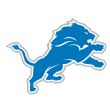
Detroit Lions
Biggest need: Tight end
Detroit has twice used a first-round pick on a tight end (Brandon Pettigrew and Eric Ebron) in the Matthew Stafford era. Neither really worked out as hoped for, with Ebron leaving this offseason after a disappointing four-year stint. That leaves sparingly used receiving tight end Luke Willson from Seattle and blocking tight end Levine Toilolo from Atlanta as the top two players on the depth chart going into the draft. Those are really just one-year, stopgap, free-agent signings. This is not a draft for Detroit to repeat its mistake by using another first-round pick on a tight end, but Hayden Hurst (South Carolina) or Mike Gesicki (Penn State) could be available to the Lions in the second round.
Quiet need: Outside linebacker
The Lions added Jarrad Davis to the middle of their linebacking corps last year, but the outside could use some help now. Projected starters include Christian Jones, an undrafted free agent signed away from Chicago, and Devon Kennard, who spent four unspectacular years with the Giants. In the past 10 drafts, Detroit has used only two picks in the first three rounds on outside linebackers: Jordon Dizon (2008) and Kyle Van Noy (2014). Neither worked out for the Lions, but new head coach Matt Patricia is used to finding versatile linebackers from his time in New England.
Not a need: Wide receiver
Rather than state a boring choice, such as quarterback (Matthew Stafford) or even kicker (Matt Prater), let's give Detroit some credit for an impressive receiving corps. Golden Tate can still get deep but has been good in the slot and on short passes for Jim Bob Cooter's offense. Marvin Jones Jr. is one of the better receivers at making contested catches. Kenny Golladay's rookie season was cut short (11 games) by injury, but he showed some big-play ability and averaged 17.0 yards per catch. It's a nice trio that gives the Lions plenty of flexibility.
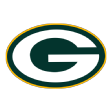
Green Bay Packers
Biggest need: Cornerback
It sounds hard to believe given the multiple high picks Green Bay has used on cornerbacks in the past several drafts, but this is an unsettled position for the team. The youngsters have been such a disappointment that Damarious Randall was traded to Cleveland and the team brought back veteran Tramon Williams. While we're not going to write off Kevin King after his rookie year -- many high-potential cornerbacks will struggle as rookies -- time is running out for Quinten Rollins to prove his worth, as he'll be a free agent after the season.
Quiet need: Wide receiver
Aaron Rodgers to Jordy Nelson was one of the most efficient connections in NFL history, with a 127.9 passer rating together, according to ESPN Stats & Information research. But age and injury caught up to Nelson, who will play for the Raiders this year. To help offset this loss, especially in the red zone, the Packers acquired tight end Jimmy Graham, who can also serve as a slot receiver. However, the Packers have very little at wide receiver after Randall Cobb and Davante Adams. Geronimo Allison is capable of the occasional play, but he would be a downgrade in Green Bay's usual three- or four-receiver sets. Cobb is also a free agent after this season, so that search for the next wave of receiving targets for Rodgers needs to start soon.
Not a need: Quarterback
While several teams with an older quarterback could use this draft to find a successor, the Packers are not one of those teams. Rodgers will turn 35 in December, but he should have a handful of years left and is still performing at a high level. His durability might be a concern after another collarbone injury, but the Packers traded for Cleveland's DeShone Kizer in March. He can serve as an upgraded version of Brett Hundley, although the Packers aren't winning another Super Bowl in the near future without a healthy Rodgers.

Minnesota Vikings
Biggest need: Guard
You know the roster is in good shape when guard is the biggest need, but the Vikings could use some young talent there. Minnesota's rushing offense ranked 23rd in adjusted line yards on runs marked as middle/guard. Right guard Joe Berger retired in March and could be replaced by veteran Tom Compton, who once played with Kirk Cousins in Washington. Compton has 15 starts in six seasons. Left guard Nick Easton is likely to return but had some struggles last year. Case Keenum handled pass pressure really well for most of 2017, but the Vikings could stand to keep their new quarterback investment better protected.
Quiet need: Cornerback
Xavier Rhodes was a first-team All-Pro last year, but no team can ever have enough good cornerbacks in today's NFL. Trae Waynes will be a free agent after this season unless his fifth-year option is picked up. He has shown some promise as a starter but is still the defender most likely to give up a big play in this defense. Terence Newman was 39 last season but still had the team's highest success rate in coverage, according to Sports Info Solutions. Look for Mackensie Alexander to take on more of the departed Newman's snaps, but the 2016 second-round pick still has to prove himself.
Not a need: Quarterback
Of course, the answer here is quarterback. It was the answer when the Vikings had three solid options in Teddy Bridgewater, Sam Bradford and Case Keenum. It is definitely still the answer after they discarded all three to make Kirk Cousins the highest-paid player in NFL history. Expectations will never be higher in Cousins' career than they will be this year, but as he enters his age-30 season, this is by far the best roster he has ever had around him.
NFC South
By Andrew Potter

Atlanta Falcons
Biggest need: Defensive line
Dontari Poe left the way he came -- off to Carolina in free agency after a one-year stint in Atlanta, during which he started all 16 games as perhaps the key player on Atlanta's interior defensive line. Aptly, the spot vacated by Poe is now the largest hole on the Falcons' roster. Grady Jarrett has one interior spot nailed down, but the only two other defensive tackles presently rostered have two professional appearances between them. Jack Crawford can play inside or outside situationally, but the Falcons are widely expected to use their first-round pick on what they hope will be a true replacement at the heart of their defensive front.
Quiet need: Receiver
In Julio Jones and Mohamed Sanu, the Falcons have one of the best receiver tandems in the league. The question lies beyond those two: The departure of Taylor Gabriel to Chicago leaves career special-teamer and backup receiver Justin Hardy as the third option. Hardy is a fourth-year professional with five career starts, who has hauled in a remarkably consistent 20 to 21 catches in each of his first three seasons. The Falcons have spoken in the past about a desire to get Hardy more time on offense, but his targets have actually fallen each season. The only other receiver on the roster at present is second-year pro Marvin Hall, who had only two receptions in his rookie season -- although one was a 40-yard touchdown bomb against the Dolphins in his career debut.
Not a need: Edge rusher
Despite the departure of last season's sack leader Adrian Clayborn, the Falcons are not a team with a desperate need at defensive end. Vic Beasley Jr., who spent portions of last season as a traditional strongside linebacker, is expected to return to full-time duty as a dedicated edge rusher in 2018, while Takk McKinley flashed serious pass-rush potential last season and should improve with a year of experience. Brooks Reed, Jack Crawford and Derrick Shelby provide depth and situational flexibility in the rotation, leaving the team theoretically free to pursue options at other spots.
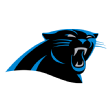
Carolina Panthers
Biggest need: Receiver
Last season's biggest need is this season's ... even bigger need. The departure of Kelvin Benjamin in a midseason trade with the Bills left the Panthers relying, at times, on veteran special-teamer Russell Shepard, 2015 UDFA Damiere Byrd and roster flotsam Kaelin Clay and Brenton Bersin as starting wide receivers while Curtis Samuel missed the second half of the season due to injury. Making matters worse, Cam Newton's favorite receiver, Greg Olsen, missed half of the season with a fractured foot. The Panthers tight ends therefore combined for fewer yards from scrimmage than Olsen alone had accumulated in each of the previous four individual seasons. Newton needs a credible deep threat to maximize his effectiveness as a passer, and the Panthers still have not replaced former Newton favorite Ted Ginn Jr. in that essential role.
Quiet need: Offensive line
Andrew Norwell's big-money move to Jacksonville might preclude this from being an especially quiet need, but it is eclipsed by the problems in the pass-catching corps. Still, Norwell's departure means the Panthers now have a hole at left guard between the two Kalils: an overmatched and overpaid Matt at left tackle, and center Ryan, who reportedly intends to retire after the 2018 season. Left tackle has been a problem area since Jordan Gross retired, and Matt Kalil at least brings some measure of stability there, but the Panthers are expected to make the offensive line a priority after some major offseason losses.
Not a need: Linebacker
What else is new? Even with the four-game suspension of Thomas Davis for violating the league's policy on performance-enhancing substances, the Panthers appear largely set at the linebacker spot. An effective spot starter in the past, Shaq Thompson has another opportunity to supplant the 35-year-old Davis at the top of the depth chart, while Luke Kuechly remains one of the best three-down linebackers in the league as long as he can minimize further head trauma. David Mayo, a 2015 fifth-round pick, will be the first player off the bench, and the Panthers have a track record of getting strong play from even their backup linebackers.
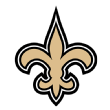
New Orleans Saints
Biggest need: Linebacker
The Saints' defense improved by leaps and bounds in 2017 from where it was at the end of 2016, but one issue remained: When free-agent acquisition A.J. Klein was lost for the season with a groin injury, the team lost its only viable coverage linebacker. Craig Robertson and Manti Te'o filled in the best they could, but both are primarily run defenders who struggle in pass coverage. Alex Anzalone showed flashes of potential early on, but he was drafted despite a reputation for being injury prone, then made it only four games before a shoulder injury ended his rookie season. The team appears to have found solutions in the defensive backfield and along the defensive line, but the linebackers remain the weakest links on a Saints defense that suddenly oozes potential elsewhere.
Quiet need: Quarterback
A small but vocal corner of Saints Twitter has its heart set on the Saints taking Lamar Jackson with the 27th overall selection, assuming the Louisville quarterback is still on the board. The reasoning is very sound: The team has few glaring needs, and none that demand a first-round pick solution. Drew Brees is not getting any younger, and though he is not visibly declining yet, when the end comes for a quarterback, it often comes quickly. A prospective heir, meaning not Tom Savage, could set up behind one of the league's best supporting casts -- at wide receiver, offensive line and wide receiver -- under a coaching staff with a strong track record of offensive success. Brees signed a two-year deal in the offseason and is still playing at a Hall of Fame level, lessening the pressure to throw the young guy onto the field quickly, but he is also likely to retire at the end of that deal, sparing the team a messy transition in three or four years' time. Whether the specific player is Jackson or somebody else who slides, a first-round quarterback would make a lot more sense now than it would have even one year ago.
Not a need: Cornerback
It's amazing how quickly a position group can turn around in the NFL. This time last season, the Saints' secondary was a huge question mark after a three-year run as the worst pass defense in the league. Heading into 2018, Marshon Lattimore's outstanding rookie year has him in the conversation as one of the league's best cover corners, Ken Crawley built off his own solid rookie year to establish himself as a solid starter opposite Lattimore, and Patrick Robinson returns from Philadelphia with a ring, giving the Saints three starting-quality options. Last year, the departure of former No. 1 corner Delvin Breaux would have been cause for panic in New Orleans; this season, Breaux was genuinely surplus to requirements. Such has been the transformation in the Saints' backfield.

Tampa Bay Buccaneers
Biggest need: Defensive back
The team's hefty investment in the defensive line during the free-agency period, including a trade for Jason Pierre-Paul, should make an immediate impact on the front half of 2017's No. 31 DVOA pass defense. The back half has yet to be addressed: The team's starting cornerbacks project to being 35-year-old Brent Grimes, 2016 first-round pick Vernon Hargreaves and possibly the re-signed Javien Elliott. The problems with this lineup are legion. Grimes is well past the prime age for a starting cornerback. Hargreaves has struggled mightily playing outside corner during his first two seasons but did look effective in limited action as a nickelback before injuries to other players forced him back outside. Elliott saw limited action as a slot corner behind veteran Robert McClain, who has not (yet) been retained. The top backup on the outside is Ryan Smith, who was every bit as poor a cornerback last year as we would expect from the previous year's failed attempt to move him to safety. The team desperately needs an infusion of talent at this position, both to allow Hargreaves back into the slot, where he might be more effective, and to supplant Grimes when Father Time eventually drags him to hang it up.
Quiet need: Running back
The belated but inevitable departure of Doug Martin, coupled with the loss of Charles Sims, leaves 2016 UDFA Peyton Barber and veteran Jacquizz Rodgers as the incumbent running back tandem in Tampa Bay. Rodgers had the best season of his career in 2016 as the injury replacement for the departed duo, while Barber led the Buccaneers with a paltry 423 rushing yards in 2017. Neither has surpassed 560 yards in a season nor started more than five games; both would be solid second or third options, but neither is an especially dynamic player as either a rusher or receiver. The days of hoping for a Martin revival have officially ended. The Buccaneers should probably take the opportunity to look for a viable long-term replacement in this draft.
Not a need: Receivers
This came up a lot last offseason in the context of the team using a first-round pick on tight end O.J. Howard, but it remains just as true now: The Buccaneers are one of the few teams in the league who probably have more pass-catchers than they really need. DeSean Jackson, Mike Evans and Chris Godwin are a diverse group of outside receivers who bring a range of strengths to the offense, while Howard and Cameron Brate are both talented receiving tight ends and very solid red zone threats. Adam Humphries is the only dedicated slot receiver, but either of the tight ends or backup Anthony Auclair could fill that role if Humphries were to miss time for any reason. Unless a rookie were to immediately supplant Humphries in the slot, there is very little room for any other receiver to make an impact in one of the strongest and deepest talent pools in the league.
NFC West
By Bryan Knowles
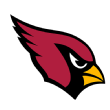
Arizona Cardinals
Biggest need: Quarterback
The Cardinals opened the offseason with no quarterbacks under contract, so that was Priorities 1, 2 and 3 this offseason. Adding Sam Bradford and Mike Glennon in free agency means they'll at least have someone to line up behind center this season, but the Cardinals can't really afford to rest there. Neither Bradford nor Glennon has played a full NFL season since 2012, and Bradford's knee has been described as "degenerative." So, while the Cardinals no longer necessarily need to use their first-round pick on a signal-caller of the future, it would be wise to draft and develop someone who could potentially anchor the position for years to come -- and could step in when and if Bradford's injury history comes back to bite him yet again. The Cardinals haven't used an early-round pick on a quarterback since Matt Leinart in 2006; it might be time to invest in the future of the position rather than looking for veteran solutions every three or four seasons.
Quiet need: 3-technique lineman
The Cardinals will be shifting to a 4-3 base alignment under new head coach Steve Wilks. This isn't as big a shift as it might seem -- the Cardinals regularly use their nickel package and frequently used packages with four down linemen under former defensive coordinator James Bettcher -- but it does mean some new regular roles for returning defenders. Perhaps the shift in philosophy will finally unlock 2016 first-round pick Robert Nkemdiche's potential; he has logged just 335 defensive snaps in his disappointing career so far. But the Cardinals should give themselves options to line up next to Corey Peters on the inside of the line.
Not a need: Linebackers
Perhaps no Cardinal will benefit from the shift in alignments more than Haason Reddick, who looked very sharp when working as an inside linebacker as a rookie, and less so when moved to the outside to replace the injured Markus Golden. With Reddick and Deone Bucannon inside, the Cardinals have a pair of young, athletic linebackers to build around. They could still use some more bodies there, but it's the closest thing they have to being set anywhere on the roster.

Los Angeles Rams
Biggest need: Edge rusher
Yes, the Rams still have needs despite trading for half the NFL and signing the other half in free agency. Los Angeles' leading edge rusher last season was Robert Quinn with just 19 pass pressures, according to Sports Info Solutions charting. He has been traded to Miami. After that, it was Connor Barwin with 18.5; he remains a free agent. That means Matt Longacre and Samson Ebukam are the leading returning edge rushers, with a combined 22.5 pass pressures -- not exactly a duo to be feared. The Rams need someone on the outside who can consistently get pressure on the quarterback and make opponents pay for paying so much attention to Aaron Donald and Ndamukong Suh inside.
Quiet need: Right guard
The Rams' offensive line turned in a very good 2017, but the weak link was right guard Jamon Brown. Brown is a physical mauler in the running game who punched open plenty of holes for Todd Gurley II, but he lacks technique and finesse against pass-rushers. He also happens to be a free agent after the 2018 season, so even if he continues to develop, the Rams might need to figure out an answer at the position going forward.
Not a need: Cornerback
This was the Rams' biggest need entering the offseason, with both Trumaine Johnson and Nickell Robey-Coleman slated to be free agents. After trading for Marcus Peters and Aqib Talib, re-signing Robey-Coleman and adding Sam Shields, Los Angeles is now better prepared for the upcoming season. When you add two All-Pro cornerbacks to your roster before free agency officially begins, you're doing all right. The Rams have basically imported a ball-hawking secondary, which is going to pair quite nicely with the pressure Donald and Suh will provide up the middle. Goodness, how is anyone going to throw on the Rams in 2018?
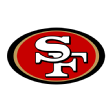
San Francisco 49ers
Biggest need: Guard
2016 first-round pick Joshua Garnett missed the entire 2017 season with a knee injury and wasn't exactly knocking down the door of a starting role before his knee was scoped. Laken Tomlinson, another recent first-round pick, has never managed to turn his significant physical talents into quality pass protection. Zane Beadles bounced between tackle and guard, failing to succeed at either position. Tomlinson and Jonathan Cooper are the projected starters entering training camp, but for the sake of Jimmy Garoppolo's health, an upgrade is needed. If he's still on the board, Quenton Nelson has to be a consideration with the ninth pick in the draft.
Quiet need: Wide receiver
The addition of Pierre Garcon to the lineup, along with the rapport Garoppolo developed with Marquise Goodwin and Trent Taylor at the end of the year, gives the 49ers something to work with at wideout. What they're lacking is a big feature receiver -- someone defenses have to specially account for and double-team, especially in the red zone. Our Playmaker Score system indicates this is not the year to be looking for an elite prospect, however, so San Francisco might be best off developing the talent it already has.
Not a need: Quarterback
This isn't just about having Garoppolo, though locking him up for the long term was the biggest move of San Francisco's offseason so far. The 49ers also are set at backup quarterback, having spent a third-round pick on C.J. Beathard last season. One could argue the 49ers have had quarterback as a need on one level or another in every season since Mike Singletary was head coach, so it's a strange feeling to not see the team kicking tires on yet another crop of passers.

Seattle Seahawks
Biggest need: Cornerback
Richard Sherman is in San Francisco. DeShawn Shead is in Detroit. Jeremy Lane and Byron Maxwell are free agents. That leaves the Seahawks dangerously thin at corner. Shaquill Griffin had a very good rookie season, finishing eighth in success rate, fifth in yards per passes thrown in his direction and fourth in YAC allowed, according to Sports Info Solutions charting. He could be the foundation of a new Legion of Boom, but he'll need some warm bodies to join him in the secondary. If the season started today, the other outside corner might be Neiko Thorpe, who had just 22 defensive snaps last season. Talent must be added.
Quiet need: Defensive tackle
Replacing Sheldon Richardson isn't normally what one would consider a "quiet" need, but compared to the volume levels of the voids in the secondary and offensive line, it's downright inaudible. Last year's third-round pick, Nazair Jones, joins Jarran Reed as projected starters in 2018, but that leaves a need in the rotation. The future of last year's top draft pick, Malik McDowell, remains uncertain after his 2017 ATV accident. If McDowell can return to the field, it would provide a much-needed boost to the interior pass rush. Without knowing if he'll ever see the field, however, Seattle could stand to add some more young talent to the line.
Not a need: Safety
With Sherman gone and Kam Chancellor's future up in the air, Earl Thomas is the last man standing in the Legion of Boom. Few safeties in the league can cover as much ground as he can, and his leadership and versatility were key in keeping the injury-ravaged secondary respectable in the second half of 2017. We don't know if Chancellor will ever see the field again, but if he doesn't, Bradley McDougald was a solid replacement last season. Despite an offseason of significant change on defense, Seattle's safeties should remain a strength.
